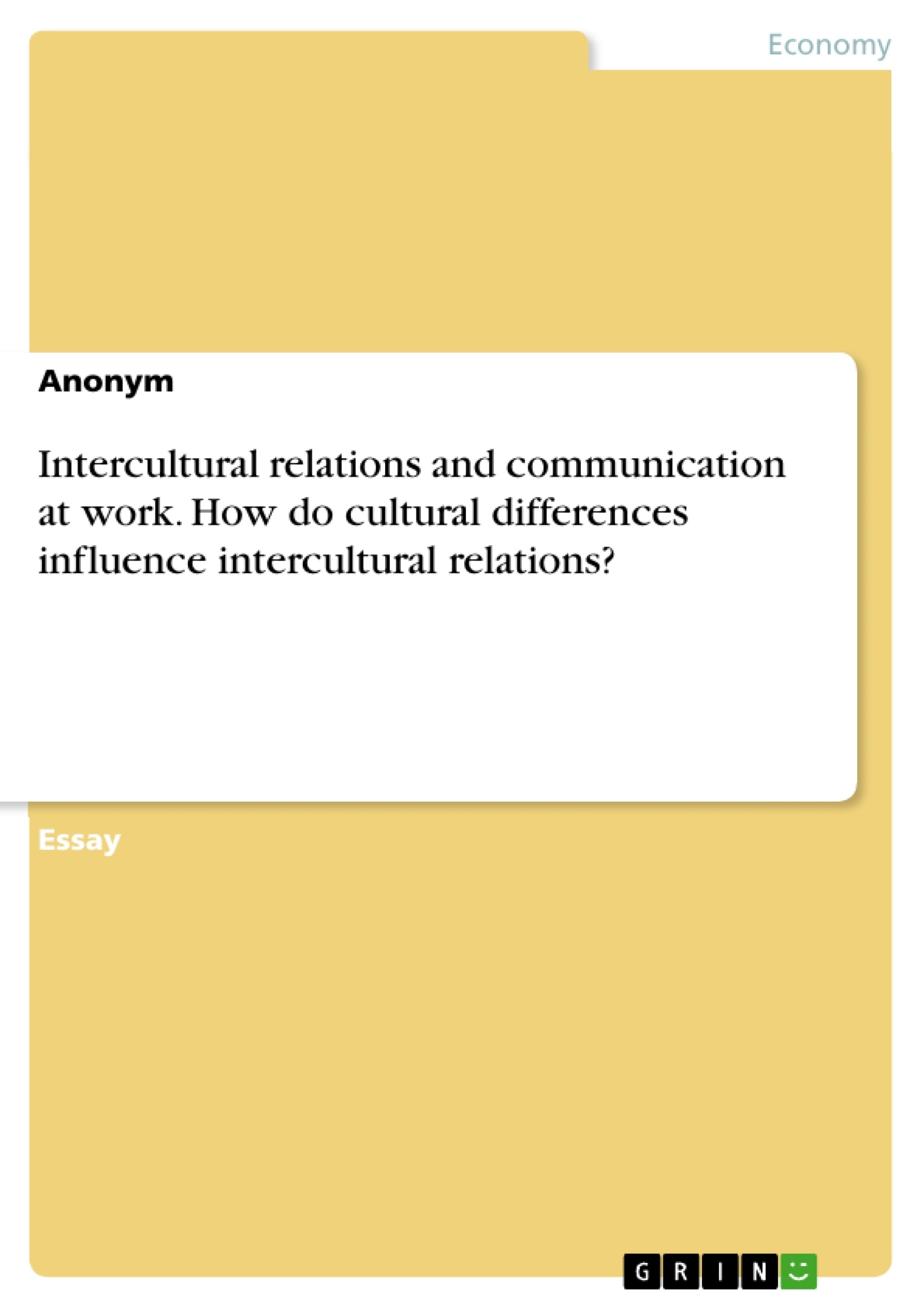This paper examines how cultural differences influence intercultural relations. This will be discussed based on theories of culture, intercultural communication and illustrated by examples. Firstly, the concept of culture will be discussed, and different concepts are presented, in order to see the change of the perception of culture in history. Afterwards, intercultural relations will be defined and in order to see the traps one risks to fall in when working intercultural, a national perception of culture will be described.
Subsequently, the concept of essentialism, othering, ethnocentrism, cultural relativism and stereotyping will be examined, to demonstrate how negative their impact is on intercultural relations. As another big part of intercultural relations, the importance of intercultural communication will be discussed.
The concepts presented are finally illustrated by two examples. Firstly, by the study of Ifversen and Thunø, which analyses the influence of cultural differences and the perception of culture when working intercultural. In particular, the cultural differences of the concepts of face and respect are examined and the results of the study will be presented and interpreted. Secondly, the text of Kalin will be displayed, which highlights intercultural problems in the asylum search. The focus here is on the cultural relativity of concepts and different time perceptions.
Inhaltsverzeichnis (Table of Contents)
- Introduction
- What is culture?
- Intercultural relations
- Esssentialism
- Othering
- Stereotyping
- Intercultural communication
- Non-verbal communication
- Ifversen and Thunø
- Respect and Status
- Face and Politeness
- Kaelin Text Troubled Communication
- Cultural relativity of Notions
- Time perception
- Conclusion
Zielsetzung und Themenschwerpunkte (Objectives and Key Themes)
This paper aims to explore how cultural differences impact intercultural relations, focusing on the complexities of globalization and the increasing interactions between people from various backgrounds. The paper draws on theories of culture, intercultural communication, and real-world examples to illustrate its points.
- The evolution of the concept of culture, from a static, national view to a more dynamic and fluid understanding.
- The challenges of intercultural relations, including essentialism, othering, ethnocentrism, and stereotyping.
- The crucial role of intercultural communication and the significance of non-verbal cues in understanding cultural differences.
- The application of cultural theories in practical situations, exemplified by the study of Ifversen and Thunø and the text by Kalin.
- The impact of cultural differences on concepts like face, respect, and time perception.
Zusammenfassung der Kapitel (Chapter Summaries)
- Introduction: This chapter introduces the topic of cultural differences and their influence on intercultural relations, highlighting the growing importance of understanding these dynamics in a globalized world. The chapter also outlines the paper's structure and the key concepts that will be discussed.
- What is Culture?: This chapter delves into the historical evolution of the concept of culture, tracing its development from a static, nation-based understanding to a more dynamic and fluid one. The chapter explores how the concept has evolved to acknowledge the mutability and equality of cultures, emphasizing the influence of social environment and individual experiences.
- Intercultural Relations: This chapter defines the concept of intercultural relations and examines the traps one risks falling into when interacting with individuals from different cultures. The chapter explores the pitfalls of essentialism, othering, ethnocentrism, stereotyping, prejudice, and bias, highlighting the importance of cultural sensitivity and understanding in intercultural interactions.
- Esssentialism: This chapter examines the concept of essentialism and its implications for intercultural relations. It explores the tendency to categorize and draw conclusions about individuals based on group patterns, leading to assumptions about their behavior and cultural identity. The chapter emphasizes the limitations of essentialism and its contribution to feelings of inadequacy and exclusion.
Schlüsselwörter (Keywords)
The key themes and concepts explored in this work include: cultural differences, intercultural relations, globalization, cultural diversity, essentialism, othering, ethnocentrism, stereotyping, intercultural communication, non-verbal communication, face, respect, time perception, cultural relativity, and the impact of cultural differences on communication and interaction.
- Quote paper
- Anonym (Author), 2020, Intercultural relations and communication at work. How do cultural differences influence intercultural relations?, Munich, GRIN Verlag, https://www.grin.com/document/910408



